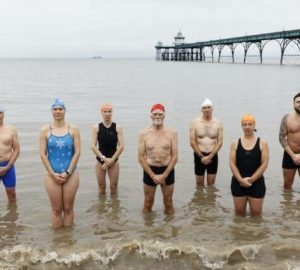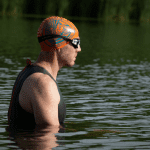Trends in open water swimming
With our Feb/Mar 2015 Issue we marked four years of publishing H2Open Magazine. So what changes have we seen in that time, and what do we think will happen next?
In 2011, marathon swimming had already been an Olympic event and excitement was growing for the 2012 Olympics with hopes that team GB could replicate its outstanding medal haul from Beijing. In the end, British swimmers finished just outside the medals in both the men’s and the women’s races but as one of the few free-to-view events, the 10km swim in Hyde Park drew thousands of spectators. Watching two hours of open water racing turned out to be more exciting than people imagined.
Inclusion of marathon swimming in the Olympic programme has galvanised the sport at the elite level and lifted the intensity of competition. FINA has streamlined its open water events into two series with one for ultra-long distances (the Grand Prix series) and a second (the World Cup) exclusively featuring the Olympic 10k distance. With the next Olympics to be hosted in Brazil, Brazilian swimmers delivered exceptional performances in 2014 driven by dreams of selection for their home-country games.
The Olympic focus on the 10km distance has filtered through to the mass participation market. With the notable exception of the Great Swim Series and the Henley Classic, many events in 2011 focused on ‘triathlon’ distances: 1.5km, 1.9km and 3.8km. Races were frequently put on by triathlon event organisers, often alongside triathlons, and were seen as training events for triathletes rather than races for swimmers in their own right.
In contrast, the Great Swim series, which started in 2008, deliberately focused on a mile and was marketed at recreational and competitive swimmers rather than triathletes. The Henley Swim event, which is now called the Henley Classic, took its distance of 2.1km from the boomed regatta course. Starting in 2004, it was always targeted at swimmers.
In 2011, event organiser Human Race created a 10km swim at Dorney Lake after lobbying from swimmers. It proved more popular than expected and is now one of a number of 10km swims on the calendar. “Swimmers” distances have become more popular: 10km, 5km, 3km and 1 mile. More recently, destination events have taken off. The best UK example here is probably Chillswim’s length of Coniston swim, where it’s the location and the satisfaction of swimming from one end of the lake to the other that’s important. The other aspect of this has been the growth of travel to overseas events. We receive increasing numbers of messages from swimmers that have based a holiday around a swimming event or series of swims.
This leads on to the “swim tourism industry” – we do think that it is now appropriate to use that term, whereas in 2011 only Swim Trek had any real presence in the market. However, around that time, several new companies appeared so that now there is a choice of distinct options and wide variety of locations.
Back on the home front, the Outdoor Swimming Society, fuelled by social media and its popular River Dart 10k, continues to grow and thrive. You will now find local groups around the UK regularly meeting for wild swims, frequently followed by cake. For many swimmers, a big part of their social life and recreational time now seems to revolve around meeting a few friends for a dip, often next to a “No Swimming” sign, and posting the pictures on Facebook.
The outdoor swimming trend has continued into the winter. Traditionalists continue with their brief dips in only their costumes while others clad themselves from head to toe to fingertips in neoprene in order to stay out a little longer. Much of this swimming is informal but there are also winter swimming events in both unheated lidos and lakes attracting hundreds of participants.
A relatively recent invention is the Ice Mile – a mile swum in only a swimming costume in water of five degrees or less. Given the expected survival time in water of this temperature can be as little as 30 minutes this is a serious and potentially dangerous challenge.
So where is all of these leading? Prophecy is a difficult business, and it’s mixed in with our own hopes of continued growth and interest in the sport, but we think the trend is towards people seeking more exciting, interesting and unique challenges. We see different pathways for people coming into open water swimming. The gateway is often an event like the Great Swim, which must be swum in a wetsuit. People then seek longer events or they train to become faster – or both. Events over measured distances aiming at particular times are interesting for a while but as confidence grows new challenges are sought – non wetsuit, longer distances, point to point and events overseas. We therefore see growing demand for coaching services, interesting events and swim travel along with interest in kit that supports swimming adventures.







